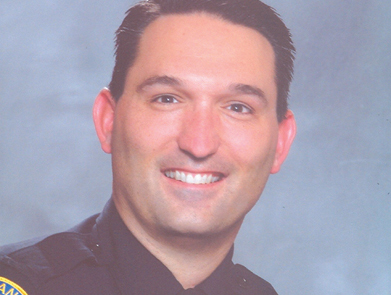In some ways, Gilroy, Morgan Hill and Hollister have become poster children for an aggressive anti-gang movement over the past four months, highlighted by their participation in two celebrated and widely publicized raids that netted roughly 80 known gang members and their associates.
But with a new year has come a slightly new outlook for regional law enforcement officials, and while they aren’t completely abandoning tactics of suppression and costly, undercover initiatives – like the recent “Operation Garlic Press” – the region as a whole appears to be shifting its focus.
“We can’t arrest them all,” Gilroy City Councilman Bob Dillon said.
San Benito and Santa Clara county officials are focusing on a long-term approach that makes a bigger commitment to prevention, halting gang participation in homes and classrooms before it slips into the streets.
“You need to focus more on the ground level, targeting the youth before they get involved in gangs,” said Capt. Kurt Svardal of the Gilroy Police Department. “The true focus has to be on those kids that are starting to turn the corner and show a propensity to a gang lifestyle.”
A regional approach toward prevention
In October, roughly 40 law enforcement agencies collaborated to arrest 115 suspects in what was the culmination of the dangerous, 16-month undercover investigation “Operation Garlic Press,” led by Gilroy police and assisted by officers from Morgan Hill and Hollister. Included were more than 50 known gang members, nearly all of whom were identified as Norteños, a group that accounts for almost all gang-related violence in the region, according to the GPD.
The series of raids was highly touted and widely publicized, even prompting a visit from California Attorney General Kamala Harris during a wall-to-wall press conference at City Hall while officers wrapped up the arrests.
Less than two months later on Dec. 8 police carried out another series of raids during “Operation Royal Flush,” nabbing more than 30 suspects, many of them suspected gang members involved in narcotics and marijuana sales, according to GPD.
But as much praise and publicity as those initiatives generated, lengthy investigations spawning early morning raids likely won’t become the norm, Svardal said.
“The city has recognized for a long period of time that doing operations like those aren’t long-term solutions,” he said.
How to deal with gangs in Gilroy led off the city council’s annual two-day goal-setting session Jan. 27. Sparking the public safety discussion, Gilroy City Administrator Tom Haglund announced that, while the city’s suppression efforts had been successful, raids and arrests “also must be bolstered with prevention.”
Haglund laid out several prevention options, which include forming a regional task force among officials in the three neighboring cities and pursuing a gang injunction ordinance, which could declare it a public nuisance for known gang members to associate with one another or display gang signs and colors.
“It doesn’t mean we’re moving away from suppression. We need both of these. The two work in tandem,” Gilroy Councilman Peter Leroe-Muñoz said. “It’s about finding a way to bolster suppression with a strong prevention effort as well.”
When asked about the possibility of a regional gang task force – for which funding has not yet been identified – Gang Prevention Coordinator Al De Vos of the San Benito County Probation Department said he would gladly come on board.
Addressing the problem early
If these new plans are at all going to be successful, elected officials will have to make time to meet face-to-face with local residents and “be really visible in leading this effort,” Leroe-Muñoz said.
“It’s going to take community buy-in. You have to make sure the community is in support of gang prevention and they’re willing to work with law enforcement, schools, everybody, for it to be successful,” Leroe-Muñoz said.
Violent behaviors learned from schoolmates or at home can sometimes contribute to youth joining gangs, De Vos said.
“What we found, through our studies, is there are a lot of pro-violent attitudes in the community,” De Vos said. “If we can create an environment where they can learn appropriate behaviors, that’s something that will have a big impact on the community.”
De Vos said many students grow up with the fear of being labeled a “snitch,” but that attitude has to change. Around the Hollister community, officers hand out brochures detailing gang descriptions and symbols and make residents aware of upcoming community forums to discuss local gang violence.
“We need the community to report, we need the community out helping us,” De Vos said. “When they do report it, there is action taken so they have a role in their own safety. It’s much easier for the majority of people to address the small minority of people involved in these aggressive attitudes.”
In Morgan Hill, the G.R.E.A.T. program was cut from the schools a couple of years ago. But local police are in the “preliminary stages” of efforts to establish a regional approach to deter children from at-risk behavior, “to keep kids away from gangs, and help provide kids with the tool box they need to make good decisions,” Morgan Hill police Chief David Swing said.
The initiative is not intended to replace or replicate the G.R.E.A.T. program, but rather to collaborate with nearby communities as well as the school district, county, other community-based organizations and other stakeholders to guide the youth productively, Swing said.
“If the outcomes are successful, it will give kids the skill set to make better decisions, and keep them away from lifestyles and life choices that lead them to unproductive things,” Swing said.








